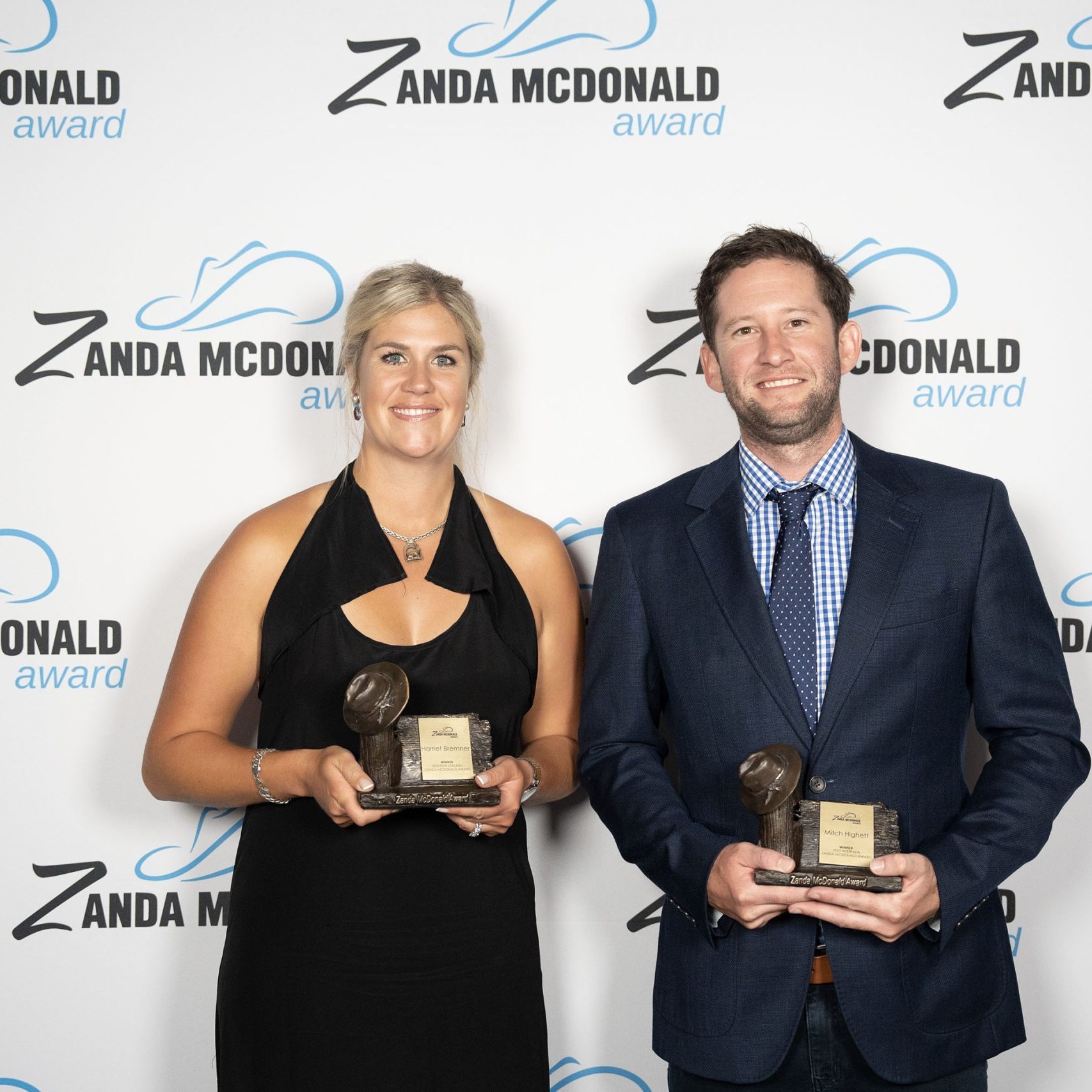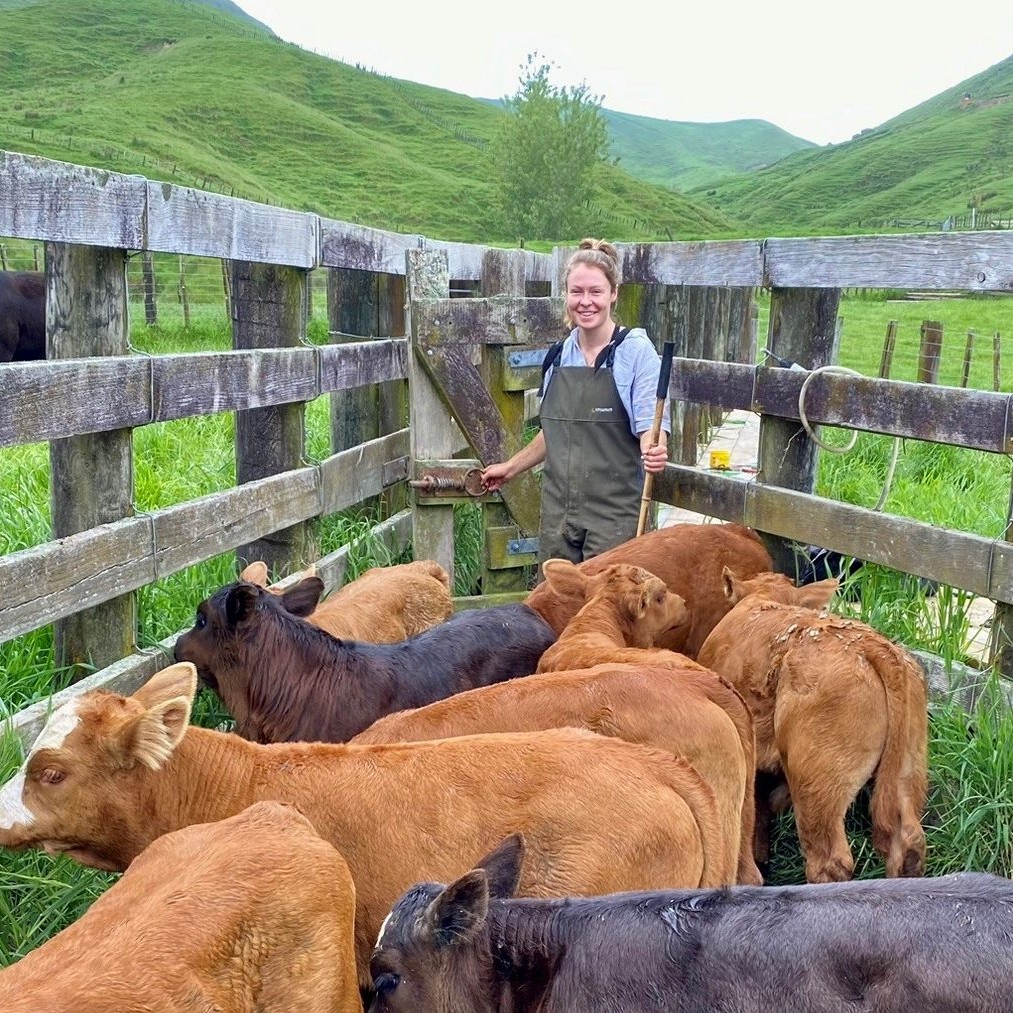Rhiannon Handcock has always pursued the things she loves and for her that’s been cows and science.
The 25-year-old PhD student is about to submit her research project looking at growth patterns and liveweight effects on milk production and fertility in dairy heifers.
It’s been three years in the making and has meant hundreds of hours spent analysing more than a million data points but it’s never felt like a chore.
“When I started out I didn’t really expect to get so involved in the statistics and maths side of it but what I’ve found can be just so interesting I can spend hours just playing in the data,” she says.
Growing up around the corner from the Auckland Zoo she always had a love of animals and when her family moved to a lifestyle block near Pukekohe the first thing she did was to beg her parents for a Jersey calf.
“I showed them at A and P shows and that’s where I got to meet dairy farmers and understand more about what they did.
“When it came time to choose what to do when I left school I knew I loved cows and loved science. So I decided to combine the two and study the science of cows.”
In 2015, after completing a Bachelor of Science in agriculture and animal science at Massey University and an honours year looking into the use of lucerne and herb crops for heifers during a drought, she spent close to a year working as an intern for LIC.
That piqued her interest in looking at what lessons could be learnt from the myriad of data stored within MINDA and with the help of a scholarship from Massey University she was able to take on a PhD study at Massey University with supervisors from Massey University, Lincoln University and LIC all collaborating to help her on her way.
Rhiannon used the liveweight, production and reproduction records from 189,936 spring born heifers born from 2006 -2013.
All up there were more than 1.65m liveweight data records with weights recorded for the heifers between birth and first calving.
She identified that breeds do grow differently with the Holstein Friesian heifers having more rapid declines in growth rates through their first and second winters but steeper increases through spring and summer compared with Jersey and crossbreeds.
When Rhiannon went on to look at milk production data for the first lactation she found that for each breed, those animals that were heaviest as heifers produced more milk.
There was no maximum weight in terms of milk production effect so there was no such thing as too heavy when it came to milk production.
Rhiannon’s analysis found there was a linear relationship between liveweight at three months of age and milk production.
As the animals got older the relationship between the liveweights at each age became more curvilinear.
The data showed just how important it was to rear calves well from the outset.
For each age group from six months right through to 21 months the greatest milk production response to an increase in live weight was from the lightest animals in the group.
“It shows how important it is to focus on the tail-end heifers and look at the range not just the average,” she says.
Rhiannon found the same effects when she used milk production data for three seasons as well.
All heifers were included in the milk production assessments regardless of how many calvings they had.
Effects on reproduction
Rhiannon looked at the effect of live weight at 15-months on the probability of calving as a two, three and four-year-old and found it increased with liveweight.
But she found there was a liveweight point beyond which each breed showed a decline in the probability of calving for each year.
“They were very heavy weights though and for most people that’s not going to be an issue. For 15-month heifers the decline didn’t start till they were heavier than 400kg for instance (in the Holstein-Friesian-Jersey crossbred group).”
The 15-month average live weight for that group was 300kg.
Although her work is about associations not cause and effect she’s hypothesised that the very heavy animals, producing a high volume of milk may be in a negative energy balance longer after calving making it more difficult to get in calf.
“For most farmers I think the message is to focus on getting the lighter animals up to target weights because there are really significant increases in heifers having a first and subsequent calvings the closer they are to target weight.”
Even if lighter heifers get in calf first time around their chances of having a second and third calving decline even further the lighter they are.
Rhiannon had hoped to look at the effect on six-week-in-calf rate but there wasn’t enough data recorded so she took the next best thing – calving rate and looked at the proportion of heifers calved in the first three weeks from planned start of calving.
Again, there was a significant benefit in getting heifers heavier at 15-months particularly for the first calving but again at the very heavy end there was a decline in three-week calving rate.
Rhiannon’s results showed less of an effect on second and third calvings but those subsequent calvings were adjusted in her statistical model to assume they had all calved on the same day at first calving.
Rhiannon’s PhD wasn’t all based on data associations though.
In 2015 she carried out an experiment at Massey University on 2015-born heifers comparing one group of 55 animals that were grown to target on a straight line trajectory from six through to 15 months and another group of 55 that were grown slower from six to 12 months of age (first winter).
But as they came into spring they were fed so they caught up to their counterparts at the 15-month target.
The study was designed to compare heifers grown to the industry target trajectory with the seasonal growth commonly observed in industry.
They were weighed weekly and both groups fed kale, meal and balage when pasture availability was insufficient to maintain heifer growth rates.
Rhiannon found the ones fed on the straight trajectory achieved puberty a month earlier than the seasonal group but because they were older when they reached puberty the seasonal group was 10 kg heavier on average at puberty.
More of the animals (75%) grown to target had three cycles before mating compared with 40% of the slow then fast growth rate animals but in the end there was no difference in pregnancy rates.
“It shows it’s so important to achieve the target weight at mating, and within reason, less important how we get there.”
Effect of live weight on milk production:

Effect of live weight on probability of calving:

Effect of live weight on probability of calving in first three weeks:





